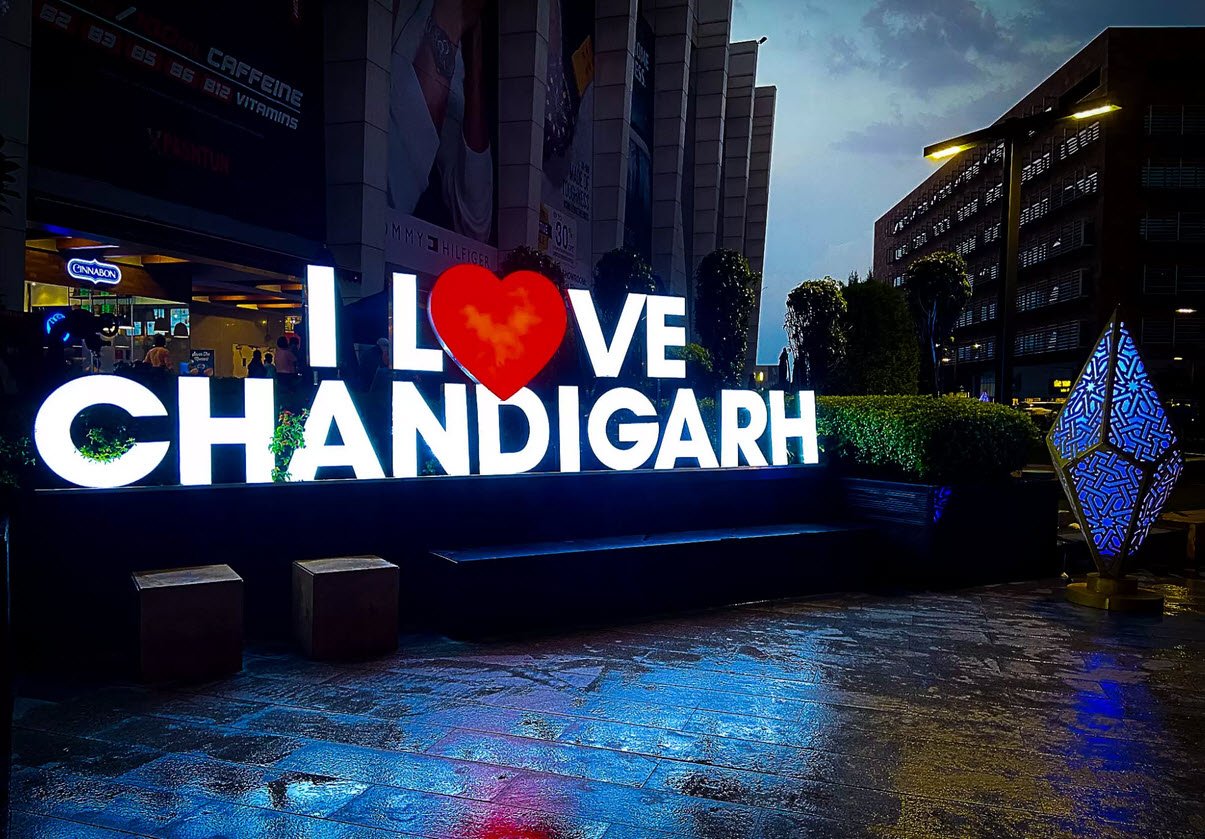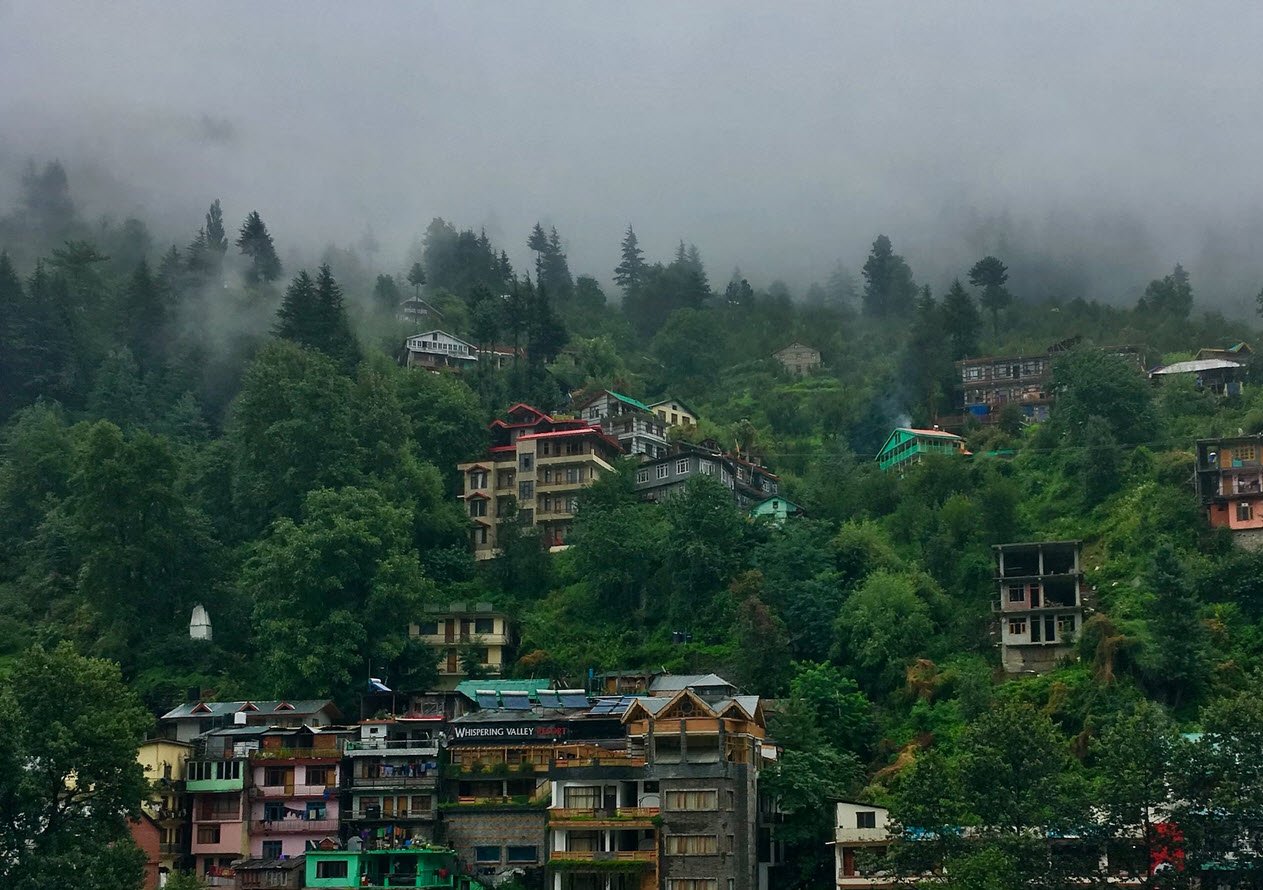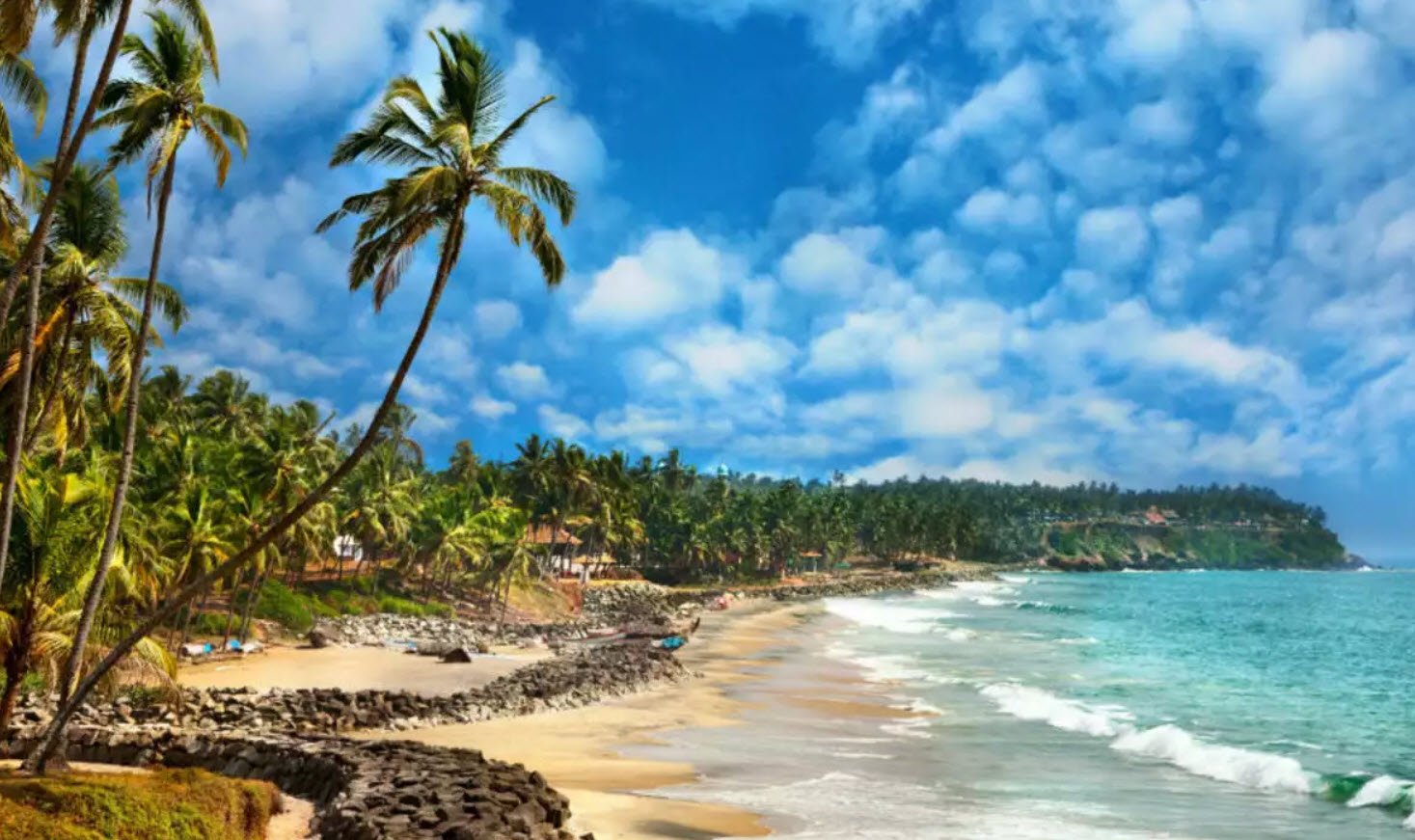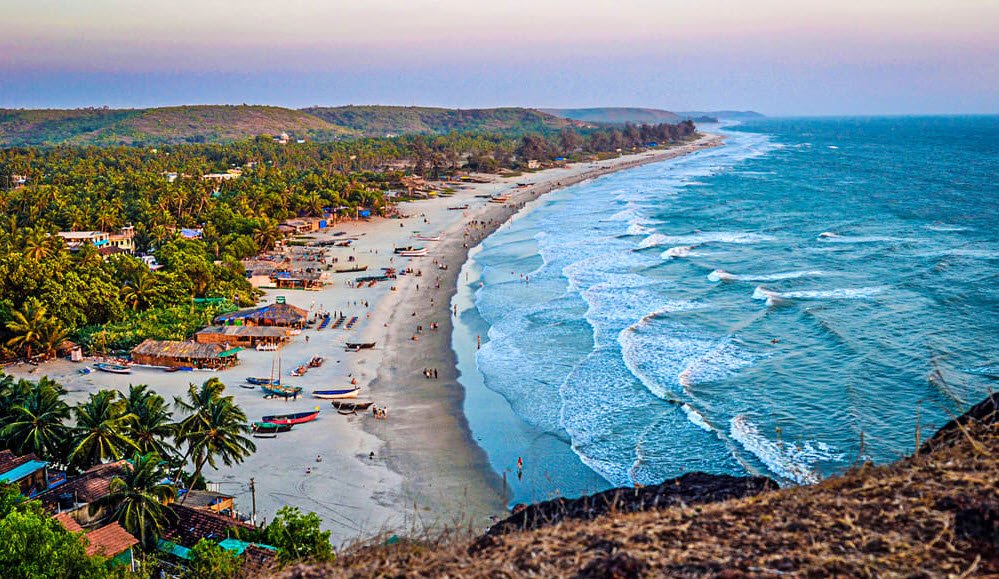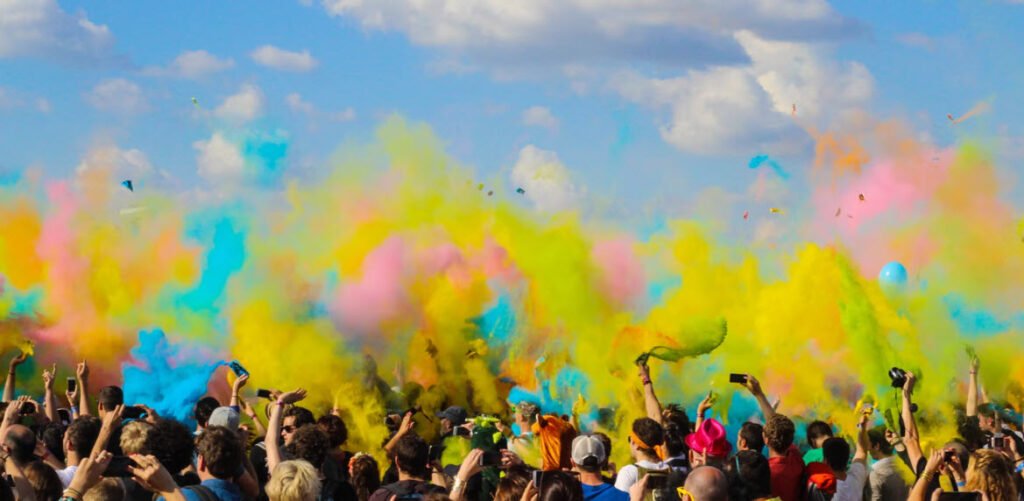
For the four decades since Goa’s Portuguese overlords finally left its shores, Goa has experienced phenomenal, and flawed, growth in tourism, industry and population, sometimes taxing to the limit its stunning, diverse, yet fragile environment.
Goa is many things to many people, but everyone agrees: there ’s nowhere on earth quite like it. Goa occupies a narrow strip of the western Indian coastline, approximately 105km long and 65km wide, but within this relatively tiny area exists an incredibly diverse mixture of landscapes, flora and fauna.
On the other side, Mumbai is not all eating, drinking and shopping.
January
The prime time for visiting Goa, January brings blue skies and warm weather, making it perfect for hitting the beach but not too hot for getting to grips with the state’s cities.
- BANGANGA FESTIVAL – A two-day classical-music festival held at the Banganga Tank in Mumbai (Bombay), in musical tribute to the Lord Ram, who, legend has it, once stopped over here and provided locals with water direct from the holy Ganges.
- REIS MAGOS FESTIVAL – Held at Reis Magos, Chandor and Cansaulim on 6 January, this festival sees a re-enactment of the journey of the Three Wise Men to Bethlehem, with young boys playing the Magi and white horses providing their transport.
- SHANTADURGA – Also known as the ‘Procession of the Umbrellas’, this is one of Goa’s most attended festivals, wherein a solid silver statue of Hindu goddess Shantadurga is carried between the villages of Fatorpa and Cuncolim, fronted by 12 umbrella-carrying young men.
- FESTA DAS BANDEIRAS – Migrant working men return home to Divar Island in mid-January to celebrate their local saint’s day by waving the flags of the countries in which they’re currently working and, more bizarrely, firing dozens of peashooters at each other.
- REPUBLIC DAY – Though Goa only became part of India in 1961, India’s celebration of the country’s 1950 establishment as a republic is nevertheless celebrated here with gusto, or at least with office closures, every 26 January.
February
Another reliably warm and sunny month for lazing on the beach or seeing the sights, February sees fewer crowds (and lower prices) than January, making it a fabulous time to sojourn in Goa.
- ELEPHANTA FESTIVAL – Classical music and dance performances are held under starry night skies outside the Elephanta Caves on Elephanta Island on the outskirts of Mumbai, at this annual festival organised by the Maharashtra Tourism Development Corporation.
- KALA GHODA FESTIVAL – Growing bigger and more sophisticated each year, this two-week-long festival in Mumbai has a packed program of arts performances and exhibitions.
- SHIGMOTSAV (SHIGMO) – Goa’s take on the Hindu festival of Holi marks the onset of spring over the full moon period with statewide parades, processions, and revellers flinging huge quantities of water and coloured tikka powder with wild abandon.
- CARNIVAL – Three days of mirth and mayhem characterise Panaji’s annual Carnival, held on the three days prior to the onset of the Catholic calendar’s Lent. Festivities come to a head on Sabado Gordo (Fat Saturday), when you’ll see a procession of floats through the city’s packed streets.
- HANUMAN FESTIVAL – Ten days in February see the Hindu monkey god Hanuman celebrated at Panaji’s Maruti Temple, with huge statues of the deity paraded about, and a street fair up and running throughout the surrounding neighbourhood.
- SHIVRATRI – To celebrate the traditional anniversary of the God Shiva’s wedding day, large-scale religious celebrations are held at the many Shiva temples across Goa on the 14th (moonless) night of the new moon, in the Hindu month of Phalgun, which falls in either February or March.
March
Although things are starting to heat up considerably by now, it’s still peak season in Goa. It might be a little too hot for much wildlife-watching, but beach lounging and swimming remain in their prime.
- PROCESSION OF ALL SAINTS – Held in Goa Velha on the fifth Monday during Lent, this is the only procession of its sort outside Rome, where dozens of huge statues of the saints are paraded throughout the village, and people from all over Goa are drawn to the accompanying festivities.
- EASTER – Churches fill up statewide over the Christian festival of Easter, with plenty of solemn High Masses and family feasting (though fewer chocolate bunnies –they’d only melt) thrown in for good measure. The biggest church services are held in Panaji and Old Goa.
April
Most tourists have departed Goa, and temperatures begin rising in anticipation of the monsoon, still over a month away. If you can take the heat, it’s quiet and calm, with great deals on accommodation.
- FEAST OF OUR LADY OF MIRACLES – Held in Mapusa 16 days after Easter, this cheerful festival, also known as a tamasha, is famously celebrated by both Hindus and Christians at Mapusa’s Church of Our Lady of Miracles.
May
May is perhaps the most uncomfortable month in Goa, with heat, humidity, and everyone awaiting the coming of the rains. Most tourist facilities have closed for the season, and days slip by in a heat haze.
- IGITUN CHALNE – One of Goa’s most distinctive festivals, specific to the temple in Sirigao (near Corjuem Fort). Igitun chalne means ‘fire-walking’, and the high point comes when devotees of the goddess Lairaya traverse a pit of burning coals to prove their devotion.
June
It’s here! The monsoon’s arrival sparks a host of celebrations, and the land turns miraculously green overnight. Water buffalo bask, children dance in the showers, and frogs croak out elated choruses.
- FEAST OF ST ANTHONY – This feast on 13 June in honour of Portugal’s patron saint takes on particular significance if the monsoon is late in appearing, where-upon each Goan family must lower a statue of the saint into its family well to hasten the onset of the rains and pray for bountiful crops.
- SANJUAN – The Feast of St John (or Sanjuan, in the local Konkani dialect) on 24 June sees young men diving dangerously into wells to celebrate the monsoon’s arrival, and torching straw dummies of the saint himself, to represent John’s baptism and, consequently, the death of sin.
- SANGODD – The annual Feast of St Peter and St Paul on 29 June marks another monsoonal celebration, and is particularly ebullient in Candolim, where boats are tied together to form floating stages and costumed actors play out tiatrs (Konkani dramas) to vast crowds.
- RAMADAN – Falling either at the end of June or early July, 30 days of dawn-to-dusk fasting mark the ninth month of the Islamic calendar. Muslims traditionally turn their attention to God, with a focus on prayer, purification and charitable giving.
August
Though the monsoon is slowly receding, the rains are still a-coming, making the countryside and jungle glisten. As the month progresses, fishermen await calmer waters and local life goes on, almost tourist-free.
- EID AL-FITR – Muslims celebrate the end of Ramadan with three days of festivities, beginning 30 days after the start of the fast. Prayers, shopping, gift-giving and, for women and girls, mehndi (henna designs) may all be part of the celebrations.
- NARIYAL POORNIMA – In both Goa and Mumbai, a coconut offering is made to Lord Varuna, god of the sea, to mark the start of the post-monsoon fishing season; fisherman pray for a bountiful harvest before hitting the first choppy waves of the August seas.
- INDEPENDENCE DAY – India’s 1947 independence from Britain is celebrated with an annual public holiday on 15 August. Celebrations are a countryside expression of patriotism, with flag-hoisting ceremonies, parades and patriotic cultural programs.
- FEAST OF THE CHAPEL – Coastal Cabo Raj Bhavan draws scores of visitors each 15 August, on India’s Independence Day, to a special church service in honour of its 500-year-old chapel’s feast day, which long predates Independence Day.
- BONDERAM – Celebrated annually on the fourth Saturday in August on sleepy Divar Island, in the middle of the wide Mandovi River. Locals take part in processions and mock battles to commemorate historical disputes that took place over island property.
September
The rains have all but subsided, leaving a scoured, green Goa just ripe for the upcoming tourist season. Local businesses begin building the season’s first beach huts, and industriousness takes the place of monsoon rest.
- GANESH CHATURTHI – Mumbai’s biggest annual festival – a 10-day event in celebration of the elephant-headed Ganesh – sweeps up the whole city: the 10th day, which sees millions descend on Mumbai’s Girguam Chowpatty to submerge the largest statues, is particularly ecstatic.
October
Though businesses aren’t in full swing, October’s warm days and deliciously cool breezes tempt a trickle of in-the-know travellers, who benefit from the widest choice in long-stay accommodation.
- FEAST OF THE MENINO JESUS – On October’s second Sunday, coastal Colva’s village church sees its small and allegedly miracle-working statue of the Infant Jesus dressed up and paraded before scores of devoted pilgrims at this important village festival.
- DUSSHERA – This nine-day Hindu festival celebrates the god Rama’s victory over Ravana in the Hindu epic Ramayana, and the goddess Durga’s victory over Mahishasura. It’s celebrated with bonfires – burning effigies of the baddies – and school-children’s performances of scenes from the life of Rama.
- DIWALI – A five-day Hindu ‘festival of lights’, this beautifully illuminated festival celebrates the victory of good over evil with the lighting of oil and butter lamps around the home, lots of gentle familial celebration and loads of less peaceful firecrackers.
November
High season begins in earnest in November, when the countryside remains post-monsoon green, and Goans gear up for the tourist business. This, along with February, is perhaps the most perfect time to visit.
- FEAST OF OUR LADY OF LIVRAMENT – Each mid-November sees a cheerful saint’s day street fair set up in Panaji, outside the tiny Chapel of St Sebastian, in the Goan capital’s atmospheric old Portuguese-infused Fontainhas district.
- INTERNATIONAL FILM FESTIVAL OF INDIA – This annual film festival (www.iffi.gov.in) – the country’s largest – graces Panaji’s big screens with a gaggle of Bollywood’s finest glitterati jetting in for premieres, parties, ceremonies and screenings.
December
Packed with parties, December is an ebullient (if expensive) month to be in Goa. Spend Christmas Day swimming in clear seas, then spare the turkey by plumping for a Christmas dinner thali, to celebrate the season the Goan way.
- FEAST OF ST FRANCIS XAVIER – Thousands upon thousands of pilgrims file past the shrivelled old remains of St Francis Xavier in Old Goa every 3 December, kicking off a weeklong festival and fair, complete with large-scale open-air Masses.
- FEAST OF OUR LADY OF THE IMMACULATE CONCEPTION – Panaji’s wedding-cake Church of the Immaculate Conception plays host to this feast and large, joyful fair on 8 December.
- LIBERATION DAY – This unusually sober celebration on 17 December marks Goa’s ‘liberation’ from Portugal by India in 1961, with military parades.
- CHRISTMAS – Midnight Masses abound in Goa on 24 December, traditionally known as Misa de Galo (‘Cock’s Crow’) since they often stretch on far into the wee hours, while the following Christmas Day is celebrated with feasting, fireworks and festivities.
- SUNBURN FESTIVAL – In recent years, ‘Asia’s biggest music festival’ has set up annually in Candolim over Christmas. Check locally for details; if it’s running to form, you’ll find a four-day dance-music extravaganza filled with international DJs.
- SIOLIM ZAGOR – Siolim’s multifaith Zagor, which takes place on the first Sunday after Christmas, involves festivities, with a procession culminating in folk plays, music and celebrations.


